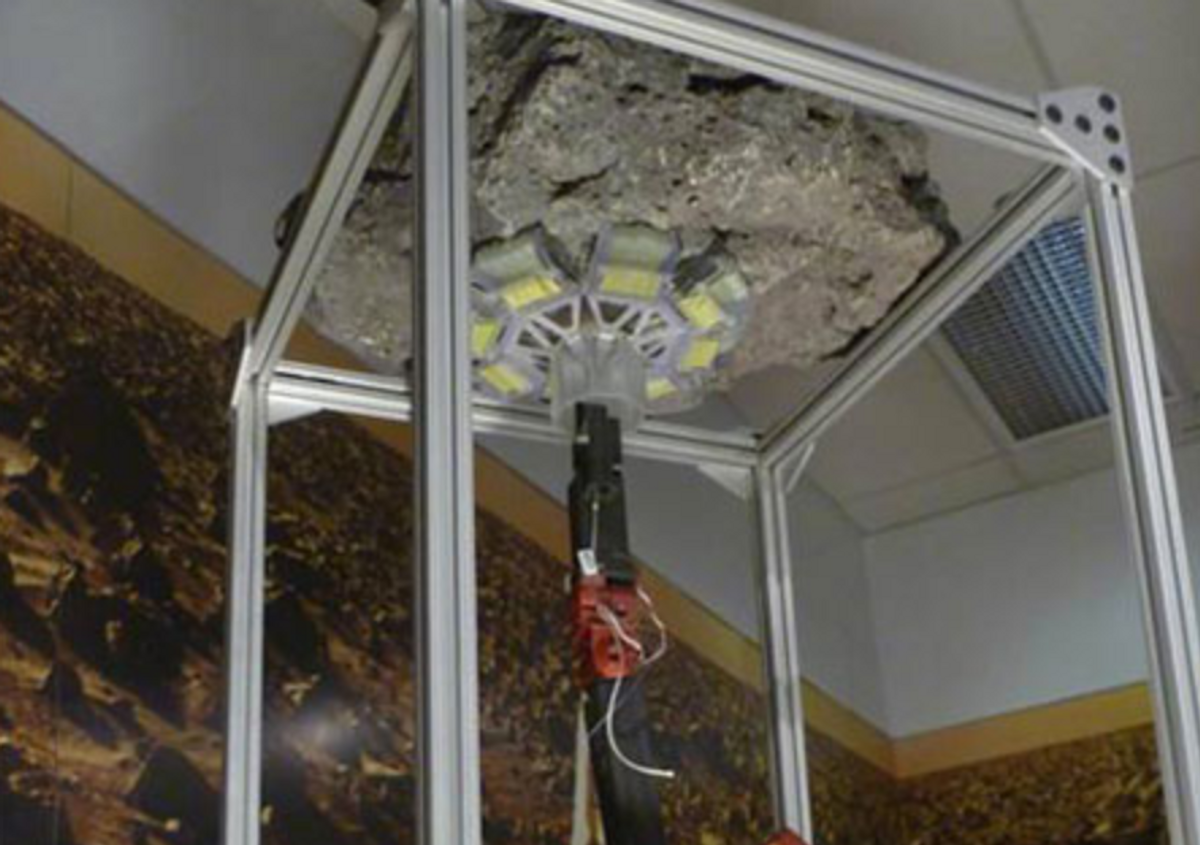NASA JPL's Lemur IIB robot hanging from a microspine anchor. Image: NASA/JPL
We’re no strangers to innovative climbing robot research around here, but we don’t often get to see what happens when some of this technology makes that very difficult jump from laboratory curiosity to potential application. Aaron Parness was at Stanford working on climbing robots like Stickybot and Spinybot, and he’s brought Spinybot’s legacy to NASA's Jet Propulsion Laboratory, where they’re working on a microspine adhesion system for sticking robot probes to asteroids.
Back in 2007, the European Space Agency launched the spacecraft Rosetta, a mission to a comet that will arrive in 2014. Rosetta includes a lander that will use a harpoon to stick itself to the surface of the comet, which (while pretty cool) isn’t necessarily an ideal solution, since harpoons aren’t removable. Ideally, you want some system that can reliably anchor a robot to an uneven surface while simultaneously providing enough downforce in microgravity to allow for sample collection, and this is where the microspines come in.
JPL’s microspine anchors are capable of quickly attaching and detaching from a variety of surface types using an actuator with just one degree of freedom. The anchor provides enough force (on surfaces ranging from vertical to inverted) for a percussion drill operating though the anchor to take core samples, and it’s robust enough to survive over a hundred anchoring sequences with a structure that’s designed to be space-durable. Check it out:
Next, JPL will be refining an ankle and foot equipped with this same spine system, the goal being to get one of their limbed robots (Lemur IIB) to be able to climb around vertical and inverted rocky surfaces. This would potentially be ideal for the exploration of asteroids and comets, or for crawling around the walls and ceilings of lava tubes on (say) Mars to collect mineral samples. There’s also talk of somehow applying this system to astronauts, probably for microgravity anchoring, but I can’t help fantasizing about having some microspine gloves and shoes that let me climb straight up the sides of buildings. ‘Course, that’s probably being worked on too, just not in a way that anyone’s allowed to tell us about.
“Demonstrations of Gravity-Independent Mobility and Drilling on Natural Rock Using Microspines,” by Aaron Parness, Matthew Frost, Jonathan P. King, and Nitish Thatte from JPL, Ohio State University, and Rutgers University, was presented yesterday at the 2012 IEEE International Conference on Robotics and Automation in St. Paul, Minn.
[ JPL Robotics Research ]
Evan Ackerman is a senior editor at IEEE Spectrum. Since 2007, he has written over 6,000 articles on robotics and technology. He has a degree in Martian geology and is excellent at playing bagpipes.




